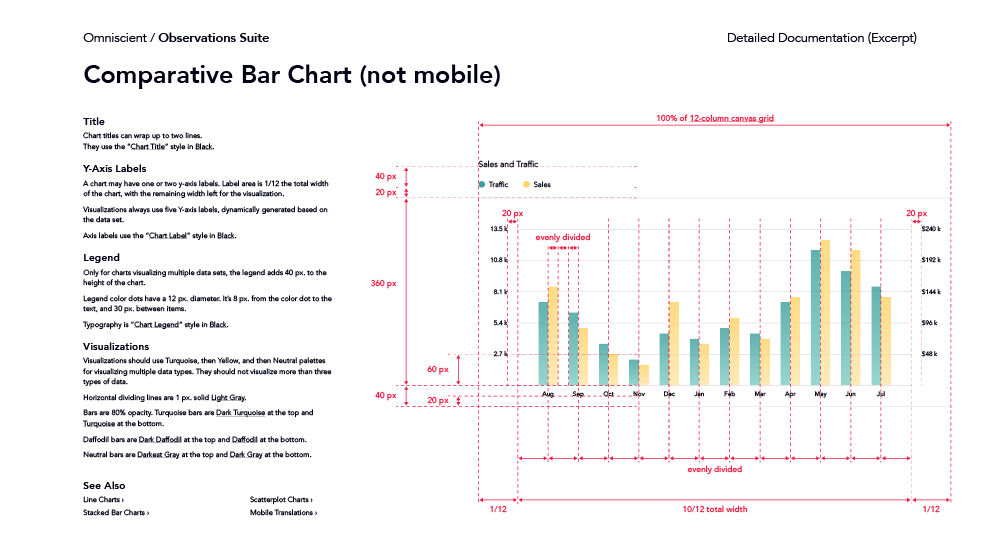Build 32
Detailed Documentation
Communication is critical to seeing intentions preserved as designs are built into functioning products and services. Even with strong processes that have the design team communicating directly with developers, engineers, and manufacturers, decisions can easily slip through the cracks. Detailed documentation seeks to mitigate the risks of both good and bad communication by capturing the specifics about how a product or service should be built. This might include details around the dimensions, relationships, behaviors, and transitions of a design. Typically the less face-to-face communication a team has, the more detailed documentation will be required.
Detailed documentation has benefits aside from the documentation itself. It can help designers think through how the design will scale and adapt to different screens and scenarios. Even if the documentation itself is not required for the project, thinking through the questions a developer might have, the constraints an engineer might encounter, or how you would communicate requirements to a manufacturer will likely make the design stronger and more foolproof.
Buy from Amazon Buy ElsewhereOmniscient
Observations Suite
Samples from the detailed documentation for Observations Suite show how charts and content cards should be built to scale to multiple screen sizes using a combination of absolute values and proportions.
Related Chapters
28
Design Guidelines
How do we ensure that our intentions are carried forward by other teams? Where do we keep track of decisions?
29
Detailed Design
When are we ready to dive into the details? How do we prioritize what we design for communication purposes?
26
Motion Studies
How does the product behave over time? What feedback does the user get when interacting with the experience?
33
Design Assurance
How do we ensure quality through execution? What should we expect when collaborating with implementers?
